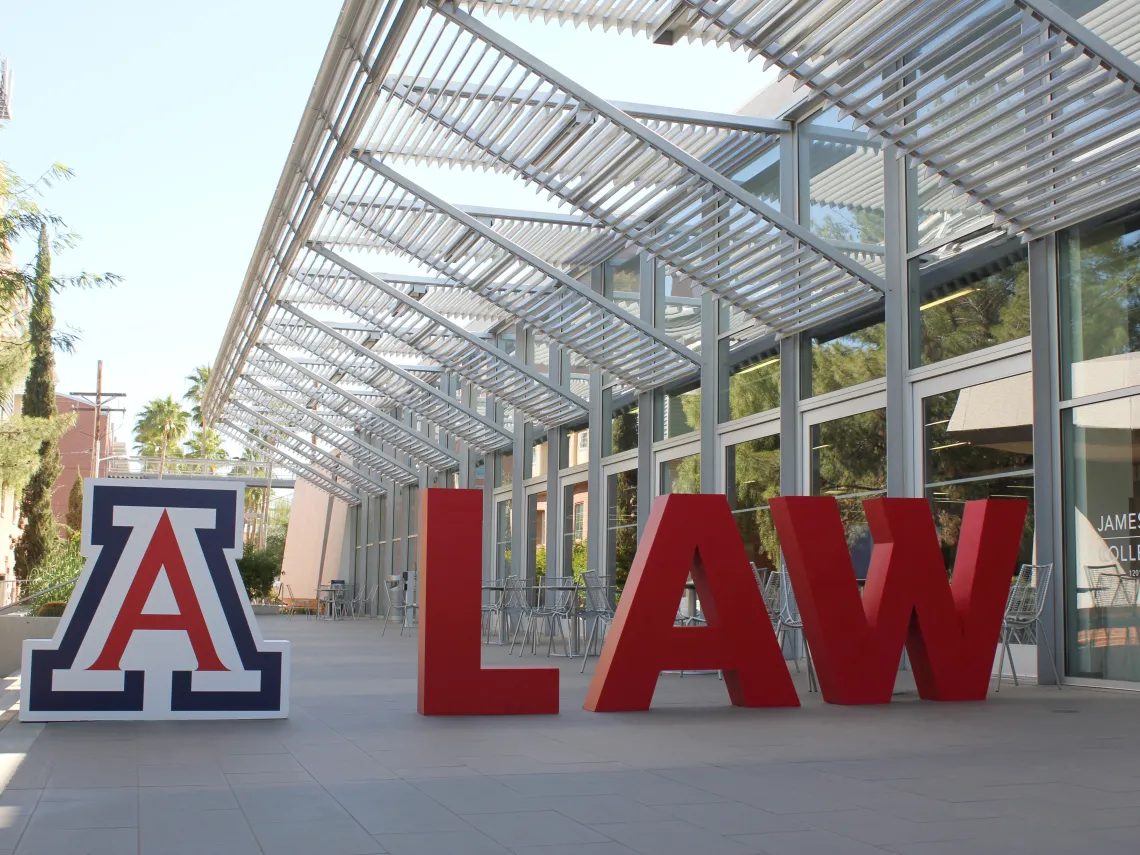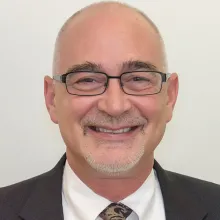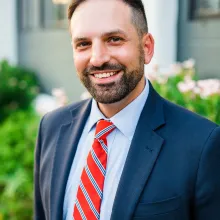The New Normal: How Faculty, Students are Approaching Law School Amid COVID-19

This summer, as the University of Arizona rolled out its plan to offer a mix of in-person and online options for the fall semester, Diana Simon decided to considerably upgrade her typical class preparations.
“To make sure I would be prepared for any eventuality and for students learning from different modalities, I spent my summer running a test class with about 10 students and another writing professor,” says Simon, associate professor of legal writing and assistant clinical professor of law. “We held class once a week for about six weeks, and we tested every feature of Zoom and other online platforms that we intended to use in class. While there were many glitches (and some true disasters), we learned from those mistakes. The goal was to make sure students were engaged, and the features we were using would allow all students, no matter what their modality, to feel engaged.”
Simon still has concerns—about both online and in-person teaching—but is eager to connect with students again, in whatever form that takes.
Here, Simon and four of her University of Arizona Law faculty colleagues, plus two JD students, reveal what law school will look like for them this semester, along with the challenges and solutions they’re working through.

- Professional Responsibility (Flex In-Person)
- Child and Family Law Clinic (Live Online)
Professional Responsibility is a problem-oriented course—just like real life. Every day, lawyers make decisions about how to approach problems consistent with the rules, norms and values of our profession. I believe that the best way to learn how to make good decisions is to practice making good decisions. So, while I will lecture some, we spend most of our class time addressing problems. My approach is to maximize each student’s opportunity to engage our problems. Given COVID-19, that may be a bit of a challenge because everyone’s situation is different. When we are all online, we will use breakout groups and hold general discussions for those who can attend in real time. For those who participate asynchronously, we will utilize D2L discussion groups, where students can post and respond to each other. When some are in-person and others online, we will do much the same. Students can always connect with me to ask questions or receive feedback via email or appointment.
For the short term, the Child and Family Law Clinic will be a virtual clinic representing clients who are very real. Our classes and team meetings will be online via HIPAA compliant Zoom (privacy matters). Until it is safe, our client visits and our court hearings will be virtual. Our ability to establish trusting and meaningful relationships with our clients is greatly compromised by a quarantine. So, we have to be both flexible and creative depending on our client’s situation. That is one reason why all students work in teams. Whether we are virtual or not, communication is the key to any successful clinic, so students and I will meet virtually on a schedule and at any other time where we need to chat. We were able to manage this summer. What we learned is that time management becomes more important when we can’t just drop in on one another. But we also learned that being virtual gave us more opportunities to meet together when students and I did not have to be at the same location.

Civil Procedure (Flex In-Person)
I will teach live at the official course time via Zoom and post videos to D2L for students participating asynchronously until and unless we reach Stage 3 of the learning protocol. I chose to offer Civil Procedure this way so that students who (safely) want an experience approaching the traditional classroom in their first semester could have it. After all, I live for that forum, too!
The most significant goal will be balancing distanced learning with a section of close to 70 students. No matter the section’s size, I endeavor to connect with each individual, which is a welcome challenge under any circumstance. I always look forward to the combination of class-wide discussions and small-group or individual conversations. This fall’s course will share most of the same components in the in-person version. I will continue to post my lecture slides after class on D2L; offer voluntary, weekly exercises (with answers) to practice interpreting and applying core doctrine or federal rules; use legal popular culture references (we’re looking at you, Elle Woods and Cousin Vinny); and assign materials that illuminate the textbook cases.
What’s new? I will be making regular use of: (1) Zoom meetings for one-on-one or small group sessions, aka office hours; (2) Zoom breakout rooms for students to work collaboratively on problems delivered during class; and (3) voluntary discussions of non-course materials (e.g., works of literature, podcast episodes) that implicate timely access to justice and legal reform topics. I also welcome student input on what works for them.
Otherwise, I want to assure my students that I am trying to give them the same Civil Procedure course that they would have otherwise received! In the meantime, we’ll keep our fingers crossed for staggered gatherings together in Room 164.

Veterans Advocacy Law Clinic (Flex In-Person)
During Stage 1, I will teach the weekly class via Zoom and all other clinic activities, such as court hearings and boot camp/orientation, will be done online/remotely. When we enter Stage 2, I will offer the weekly class live both through Zoom conferencing and in-person. I will record many of the classes/portions of class so that students can watch them asynchronously if they cannot attend live. If a student is unable to attend any class or portion of a class that is not recorded, we will schedule a make-up session with that student at a time convenient for them. Currently, 50% of our fieldwork can easily be done remotely and asynchronously, but the other half has typically been done live in-person. The court hearings are currently being conducted via Zoom, so students are able to participate this way. If and when the court moves back to in-person, the students can choose to be in-person or participate remotely, as we are providing remote means for the student to engage with the client and the court even though court, client, prosecutor, and clinic faculty are all in-person.
To prepare, I have kept a few goals in mind: (1) safety and flexibility for the students; (2) maintaining the experiential/interactive aspect of a clinic for the student and the client; (3) maintaining highly effective representation of and assistance to veterans. We have been working closely with the courts where we regularly appear to keep them apprised of UA plans and guidance for students. Because court hearings have been occurring all summer (first in-person and then via Zoom), we have already been testing how we participate in a court hearing when neither we nor our clients are in court. When we were in-person in court over the summer, we began testing out the use of tablets in court to connect the “in-person in-court” client to the remote student. We have been working with our supervising attorneys to devise plans for how students this fall will first “observe” a client meeting and then be able to conduct their own client meeting while a supervising attorney “observes.” Easy—the old-school way – 3-way conference calling. We have been working with our administrative staff to move any physical files to CLIO—our electronic case management system—so that students can access them from anywhere and effectively participate in a Zoom court hearing. We are revamping our approach to our vet court client interviewing, which used to be entirely in-person in court, to telephonic and Zoom calls that can be done at times convenient for students. We are working closely with the VA to possibly conduct virtual legal clinics at the VA with the goal of providing greater access to veterans and a good safe lawyering experience for students.

Legal Writing (Flex In-Person)
My favorite thing in the world is connecting with students. It begins in the classroom, of course, but that is just where the connection is born. While I was and still am concerned about COVID, I knew the law school would take all precautions to create a safe environment, and I trusted that law students, who are mature, would do the same. I also considered that this is a first-year class, when incoming students do not know anyone, making that connection even more important.
Of course, I will continue to learn and make mistakes [with online teaching], and I know students will be understanding, just as I will be understanding of mistakes they make with the technology, because I now have been in their shoes. Am I a bit anxious at the prospect of teaching in person? Yes. But am I looking forward to walking into a classroom and seeing students in person? Absolutely.

Federal Indian Law (Live Online)
I was scheduled to teach in person, but sent out a survey to ask students about their preferences and needs. The students selected the live-online format as their preferred modality. Many are out of state or out of town, and none of them wanted to be in person until the health situation stabilized in Arizona. I've put many hours into learning how to do Zoom, and into my syllabus and preparation. I'm not a computer person and needed to learn Zoom and D2L. I started taking classes at the university’s Office of Instruction & Assessment in July and worked one on one with their instructors, who are magnificent.
At the request of the class, the assessment process will be based on four written assignments rather than a cumulative final exam. I will also post summary materials (lecture outline and notes) per class. I am planning several optional discussion sessions throughout the semester for students who want to discuss current topics or work through the material, and I will have sessions available weekly to meet individually with students. I have a student-centered approach to teaching, and I will work hard to make this live online format productive and rewarding for the class.
STUDENTS

Christina Poletti
I will most likely switch between taking class live-online and asynchronously. I chose live-online because I believe there is value in live participation (asking questions, engaging with classmates, discussing differing viewpoints, etc.). I do know, however, that schedules change and life happens, so I am thankful to have the option to participate asynchronously when the need arises. If and when the school re-opens, I may participate in the classroom, but that will just depend on how I feel about the state of the pandemic at that time. As of now, my plan is to continue online learning at least through the end of the fall semester.
While I am working on school material, I keep my cell phone in another room and turn on "do not disturb" on my computer so I am not distracted by text messages, emails, or social media. I also give myself a break in the middle of the day where I walk my dog, go get a coffee or tea, exercise, or do something else that (safely) gets me out of the house. I find that if I don't have some change of scenery throughout my day, I have a hard time staying productive.

DeLorean Forbes
I will be attending classes live online. I chose this modality because I was concerned about the rising number of COVID-19 cases in Tucson but still wanted to attend classes synchronously in order to still have the option to ask questions and participate in classes as they occur. Since I currently reside in New Mexico, where the case numbers remain relatively low, I decided to remain here for the semester. I am active in multiple organizations on the law school campus and serve on the editorial board of my journal, but I believe that I can still effectively manage my duties in those roles, in addition to my academic commitments, from across the state line.
This actually isn't my first experience with remote learning. I attended school online, asynchronously, from seventh to ninth grade. The most important habit that I formed while attending school online was to make sure that I was as consistent as possible with my study habits, in order to make the online learning experience mirror the brick-and-mortar educational experience as closely as possible. I would try to do my reading and attend my classes at the same time every day in order to stay focused and motivated and to maximize my learning. Lastly, I recommend that students be candid with your instructors about challenges to your learning, so that they can understand your situation and plan ahead for that during the semester. In general, communication with instructors will be of critical importance this semester in order to navigate the issues that will inevitably come up during the fall.
